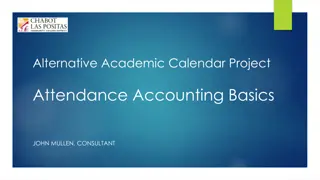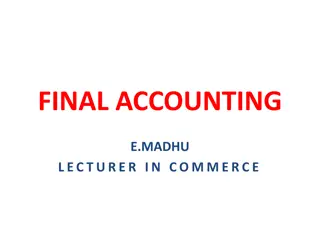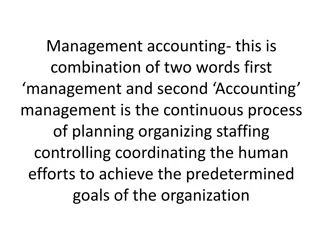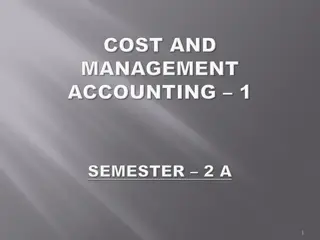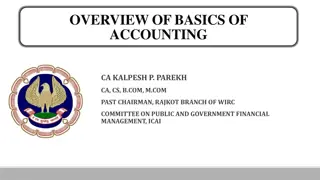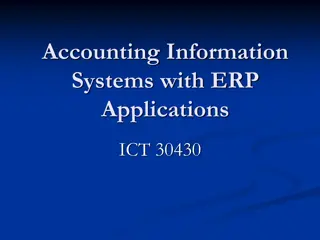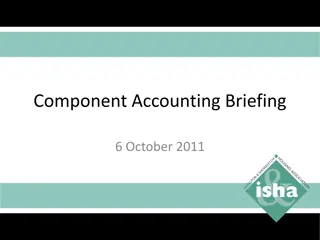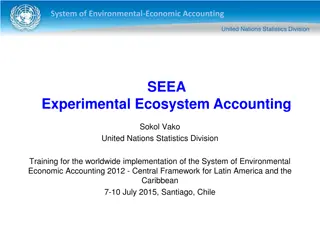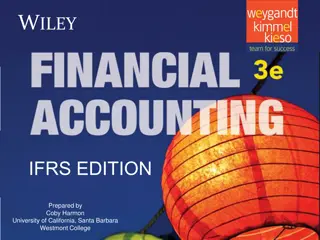Understanding the Accounting Cycle
The accounting cycle is a comprehensive process that involves recording and processing all financial transactions of a company, from their occurrence to their representation on financial statements and closing the accounts. This cycle, essential for bookkeepers, includes steps like transactions, journal entries, posting to the general ledger, trial balance, worksheet analysis, and adjusting entries to ensure accurate financial records. By following this cycle, businesses can maintain financial integrity and track their performance effectively.
Download Presentation

Please find below an Image/Link to download the presentation.
The content on the website is provided AS IS for your information and personal use only. It may not be sold, licensed, or shared on other websites without obtaining consent from the author. Download presentation by click this link. If you encounter any issues during the download, it is possible that the publisher has removed the file from their server.
E N D
Presentation Transcript
ACCOUNTING CYCLE The accounting cycle is the holistic process of recording and processing all financial transactions of a company, from when the transaction occurs, to its representation on the financial statements, to closing the accounts. One of the main duties of a bookkeeper is to keep track of the full accounting cycle from start to finish. The cycle repeats itself every fiscal year as long as a company remains in business. The accounting cycle incorporates all the accounts, journal entries, T accounts, debits, and credits, adjusting entries over a full cycle.
Steps In The Accounting Cycle STEP I - TRANSACTIONS: Financial transactions start the process. If there were no financial transactions, there would be nothing to keep track of. Transactions may include a debt payoff, any purchases or acquisition of assets, sales revenue, or any expenses incurred.
Steps In The Accounting Cycle STEP II - JOURNAL ENTRIES With the transactions set in place, the next step is to record these entries in the company s journal in chronological order. In debiting one or more accounts and crediting one or more accounts, the debits and credits must always balance.
Steps In The Accounting Cycle STEP III - Posting to the General Ledger (GL): The journal entries are then posted to the general ledger where a summary of all transactions to individual accounts can be seen.
Steps In The Accounting Cycle STEP IV - TRIAL BALANCE: At the end of the accounting period (which may be quarterly, monthly, or yearly, depending on the company), a total balance is calculated for the accounts.
Steps In The Accounting Cycle STEP V - WORKSHEET : When the debits and credits on the trial balance don t match, the bookkeeper must look for errors and make corrective adjustments that are tracked on a worksheet.
Steps In The Accounting Cycle STEP VI - ADJUSTING ENTRIES: At the end of the company s accounting period, adjusting entries must be posted to accounts for accruals and deferrals.
Steps In The Accounting Cycle STEP VII - Financial Statements: The balance sheet, income statement, and cash flow statement can be prepared using the correct balances.
Steps In The Accounting Cycle STEP VIII - Closing: The revenue and expense accounts are closed and zeroed out for the next accounting cycle. This is because revenue and expense accounts are income statement accounts, which show performance for a specific period. Balance sheet accounts are not closed because they show the company s financial position at a certain point in time.







